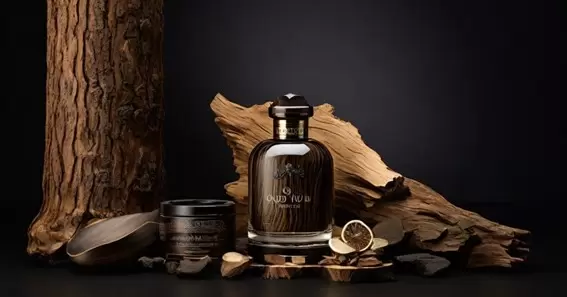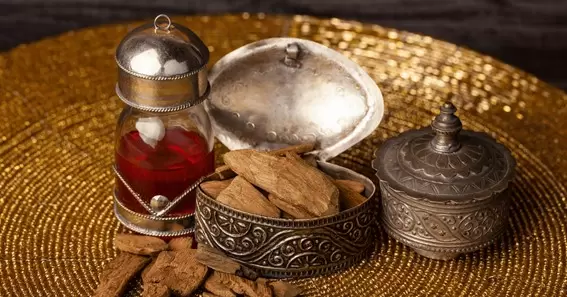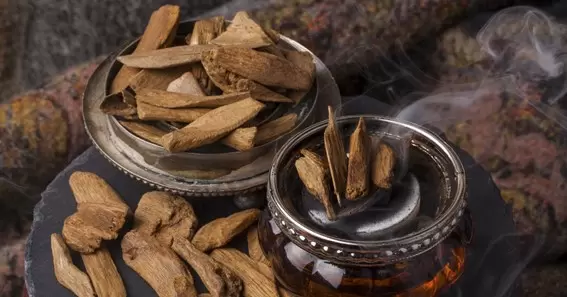What is Oud? For many years, people have loved its strong, sweet-smelling, rich fragrance very much, so this scent has become a component of all premium perfumes when it comes to cultures, which some rituals still need to be completed.
What is Oud?
Oud is a resinous heartwood that develops in definite species of Aquilaria trees after a particular mold, Phialophora parasitica, has attacked them. That tree produces this dark and scented resin to defend itself. The main places where Oud is found in Southeast Asia are India, Cambodia, Indonesia, and Vietnam.
This resin is harvested through distillation and later used to create perfumes, incense, and some traditional medicines. The present paper describes cedarwood oil and what it is all about by looking at its background information while bringing out its distinct qualities of distinction. Now you know in brief what is Oud?
What is Oud Uniqueness Reasons

Oud is unique due to various reasons:
Rare and Precious:
The uniqueness of oud increases its rarity in a big way. All Aquilaria trees do not produce Oud. Only under certain circumstances does the resin form. For many years, in some cases many decades, the tree can make the resin. Because of the long time it takes to harvest this oil and its scarcity, it is one of Earth’s most expensive natural raw materials.
Complex Scent Profile:
The scent of Oud is highly intricate thanks to a robust and rich fragrance that combines woody, earthy, and sweet undertones, usually accompanied by leathery, smoky, and spicy notes.\n, The scent from this particular substance is unique because it has various layers of essence that make it more appealing than any other. It is in demand in the world of the perfume industry due to its multifaceted nature, which gives it intensity and elegance, making sure that the fragrance keeps changing beautifully on one’s skin.
What is Oud Cultural Significance:

Oud has profound cultural and spiritual importance, particularly within Middle Eastern and Asian communities, with its usage spanning back through time for hundreds of years in religious services, traditional medicine obligations, or to showcase wealth. Islamic practices that involve burning oud incense are commonplace among Muslims because they communicate hospitality as well as ‘bad.’
Medicinal Properties:
Oud is treasured for its medicinal properties and is suitable for the nose. Even more, ancient medicine systems like Ayurveda and Chinese medicine have utilized it, citing its numerous therapeutic effects, including but not limited to the reduction of anxiety levels, enhanced cognitive abilities through stress relief, and elevation of spiritual consciousness. This is due to its anti-inflammatory and antimicrobial properties, which are attributed to it as a result.
Sustainability and Conservation:
Our production had a severe impact on the environment. Aquilaria tree populations are at risk due to overharvesting and illegal logging. Still, some ways exist that help in protecting these critical trees, such as sustainable cutting methods. It is necessary to have sustainable plantations where the oud is grown and preserve the plant by all means possible so as not to lose this priceless raw material.
Versatility in Perfumery:
In perfumery, Oud’s unique smell enables it to be used for various reasons. Depending on what you want from it, this fragrance may be a base or top note in perfume – depth & longevity or strength, respectively. Perfume makers achieve this by using the rose, sandalwood, or spices to blend with it harmoniously.
Historical Usage:
It is along antique commercial routes like the Silk Road, where the oud was exchanged, and it was a valuable gem for many civilizations, such as the Egyptians, Greeks, and Romans. This fact made it even more attractive and mysterious to fall apart.
Artisanal Craftsmanship:
Obtaining oud involves immense skill and is an art that requires being done exceptionally well. To get oud oil, harvesters must detect diseased trees where they remove wood from which resin is obtained before it is distilled. For all these things, like harvesting and pouring the resin on the ground while others collect it to make a good smelling incense out of it to be successful without compromising their scent, for example, during harvesting again since at times one may touch them, leading to contamination.
Conclusion
What is Oud? Oud is a unique scent because it is both rare and complex. People look up to it because of how scarce it is and its complexity and significance to various societies. For this reason, it remains an essential ingredient in high-class perfumery across the globe and is a vital element for traditional use. Understanding the components that makeup Oud facilitates the appreciation of its sustained popularity and the ingenuity employed in its manufacturing.
FAQ
Why Is Oud So Costly?
Its expensiveness results from scarcity, a protracted waiting to mold resin, and labor-intensive distillation and harvesting methods. Oud comes from just a few Aquilaria trees, while there is much more need for the precious resin than what is available.
How Is Oud Oil Used To Make Perfume?
In most perfumes, oud oil serves as base notes, giving body and duration to the smell. Combined with other components, its multi-layered fragrance becomes alluring and refined. There are also perfumes where this particular scent dominates
Are There Any Benefits That Can Be Associated With The Health Of The Oud Plant?
Traditional medicine has been used for its various health benefits, such as reducing stress levels and increasing mental clarity and spiritual well-being. Oud is also considered to have some anti-inflammatory and antimicrobial activities, hence its relevance in traditional medicine. At the same time, this has not been scientifically proven.
Can I Know If The Food I Purchase Is Sustainably Sourced?
To guarantee that you are buying some sustainably sourced oud, try to find certifications or endorsements from reliable environmental organizations. Always go for companies that give clear information on their procurement methods and consider environmentalism and ethical harvesting.
What Is The Distinction Between Oud And Agarwood?
Both terms oud and agarwood refer to the same material. Agarwood is the resinous heartwood, while oud is commonly used in perfumery and cultural contexts. These are the names of the fragrant resins made by the Aquilaria trees infected with fungi.
Sources:










